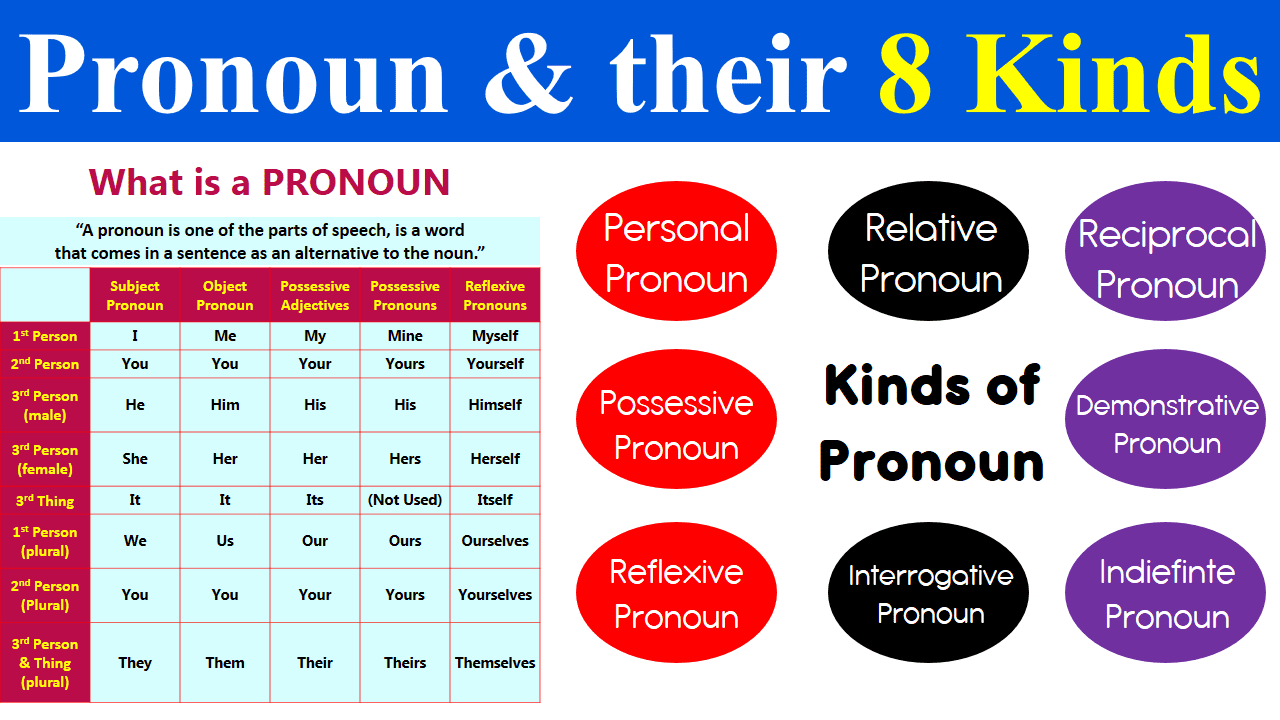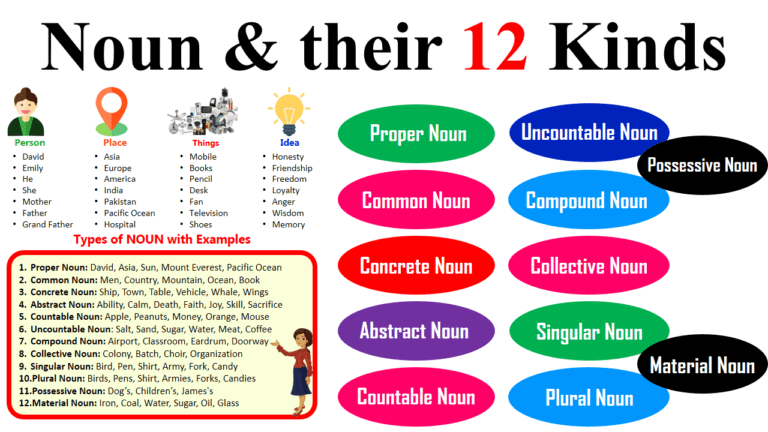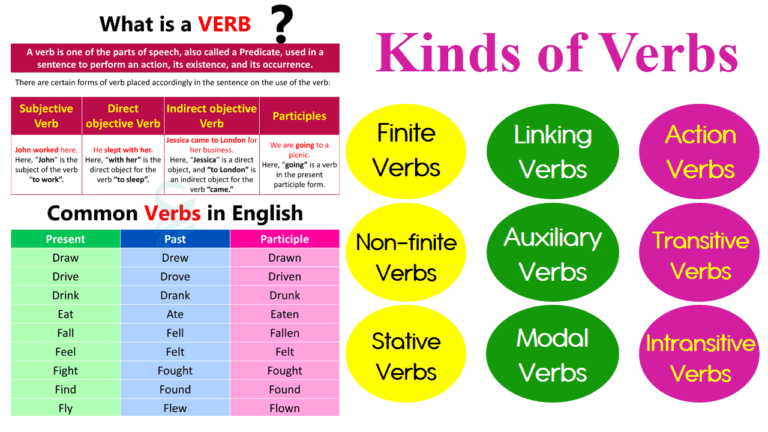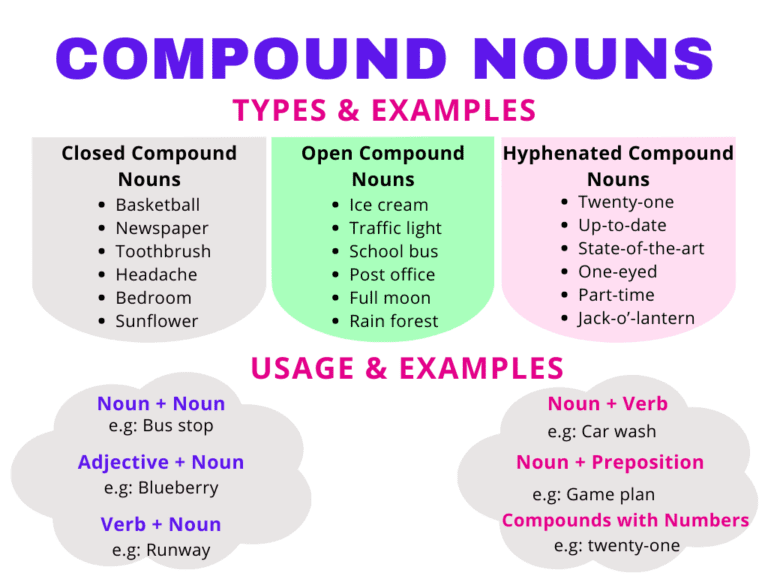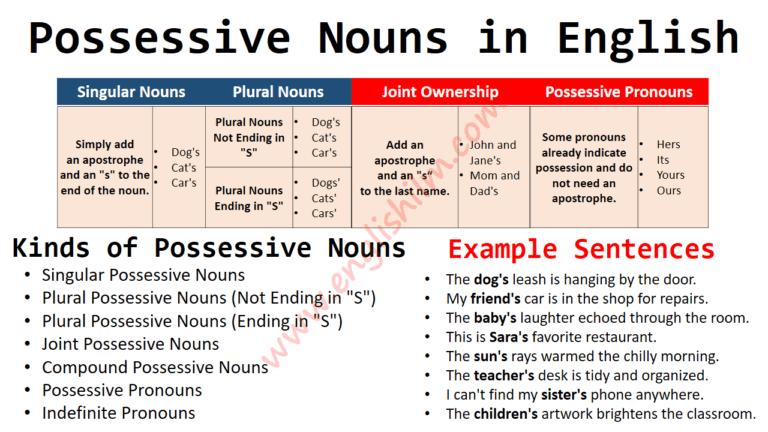In this lesson, you’ll learn the definition of pronouns, their 8 types, and useful example sentences in English. A pronoun is the second category of the parts of speech in English grammar, used to replace nouns in a sentence. This lesson will help you understand the definition of pronouns, their different types, and how to use them with clear, helpful examples.
Read more about: 8 Parts of Speech in English
What is a pronoun?
The pronoun can be defined as, “A pronoun is one of the parts of speech; it is a word that comes in a sentence as an alternative to the noun.”
Also, we can say that a pronoun is a replacement for a noun or a noun phrase in a sentence.
Pronouns are short words that function the same as the noun in a sentence. It may be functioning at any place in a sentence, like the first person, second person, or third person, respectively.
Some common pronouns used in a sentence are: He, She, It, They, We, Us, I, You, Them, anyone, Something, Nobody, etc.
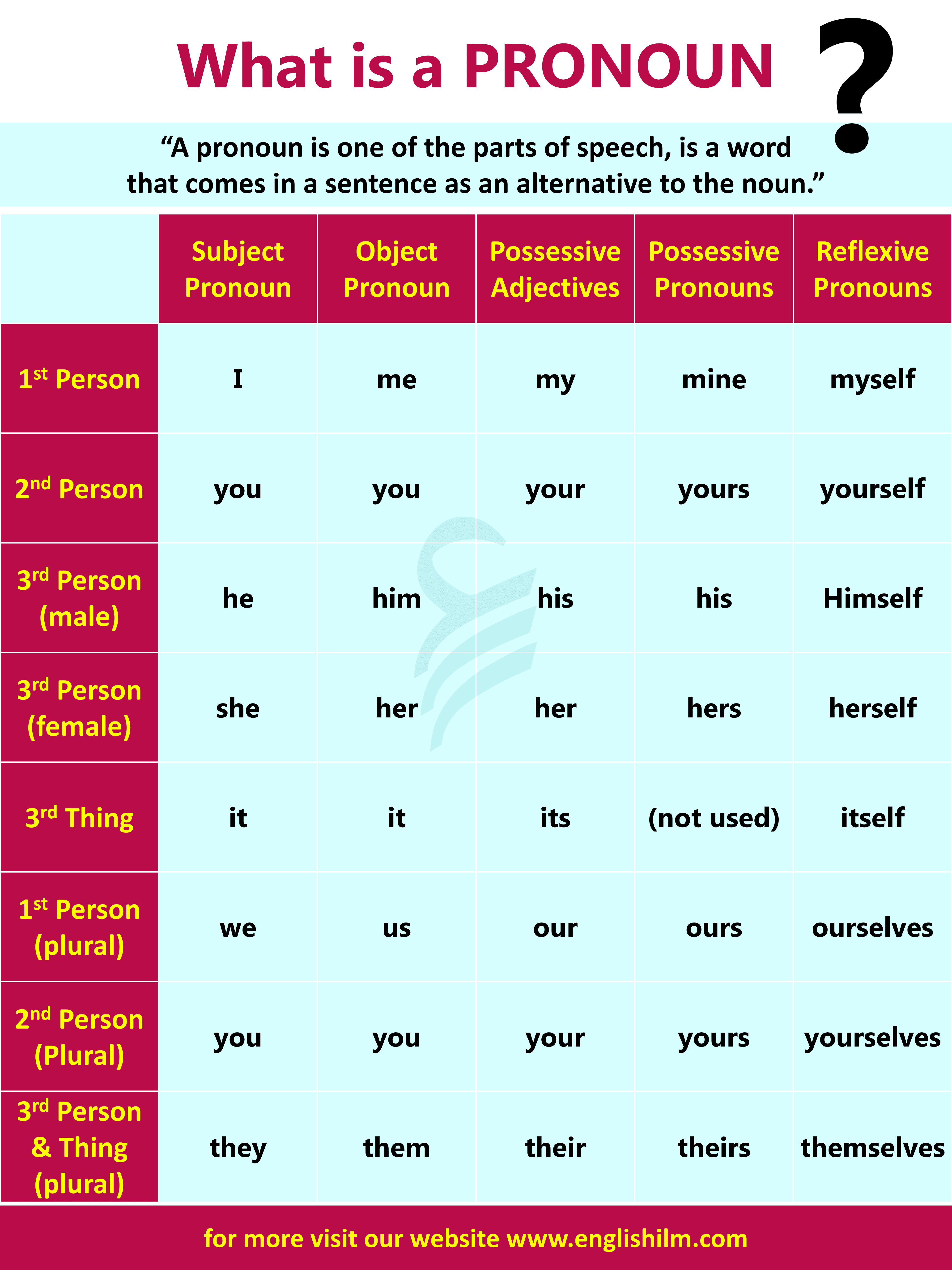
Usage of the Pronoun
The naming word for representing any male person, and for first, second, or third person, is “he, his, him, or himself” as a pronoun.
For Example:
- James, Jonathan, Robert, Andrew, David, Dwayne Johnson, etc.
- He, his, him, and himself, respectively.
Similarly, for representing the naming word for a female person, and for the first, second, or third person, the “she, her, hers, herself” pronoun is used in a sentence.
For Example:
- Sara, Stephney, Lisa, Malina, Agatha, Martha, Julia, Abella, Senorita, etc.
- She, her, hers, and herself, respectively.
And for representing any objects or things like tea, coffee, boxes, chairs, shoes, etc., the pronoun “it itself” is used in a sentence, a phrase, or a clause.
For plural words or common from gender, more persons, places, objects, first and third person, etc., pronouns like I, you, us, we, they, them, their, theirs, themself, and themselves, etc., can be used in a sentence.
Examples:
Let us see the replacement of nouns with pronouns in the below example to understand clearly.
- Andrew goes to school every morning with Andrew’s bicycle.
- Andrew goes to school every morning on his bicycle.
- He goes there every morning on his bicycle.
Here, in the above sentences, the noun Andrew (person) is replaced with “he,” the school (place) is replaced with “there,” and Andrew’s replaced with “his.
- Clara, Jordan, and Elle are playing a carrom game together.
They are playing a carrom game together.
- Is Robin coming to the party with Nora?
Is he coming there with her?
Read more about: Noun and their Types
Types of Pronouns
There are eight subtypes of pronouns.
- Personal Pronoun
- Possessive Pronoun
- Reflexive/Intensive pronoun
- Reciprocal Pronoun
- Demonstrative Pronoun
- Indefinite Pronoun
- Relative Pronoun
- Interrogative Pronoun
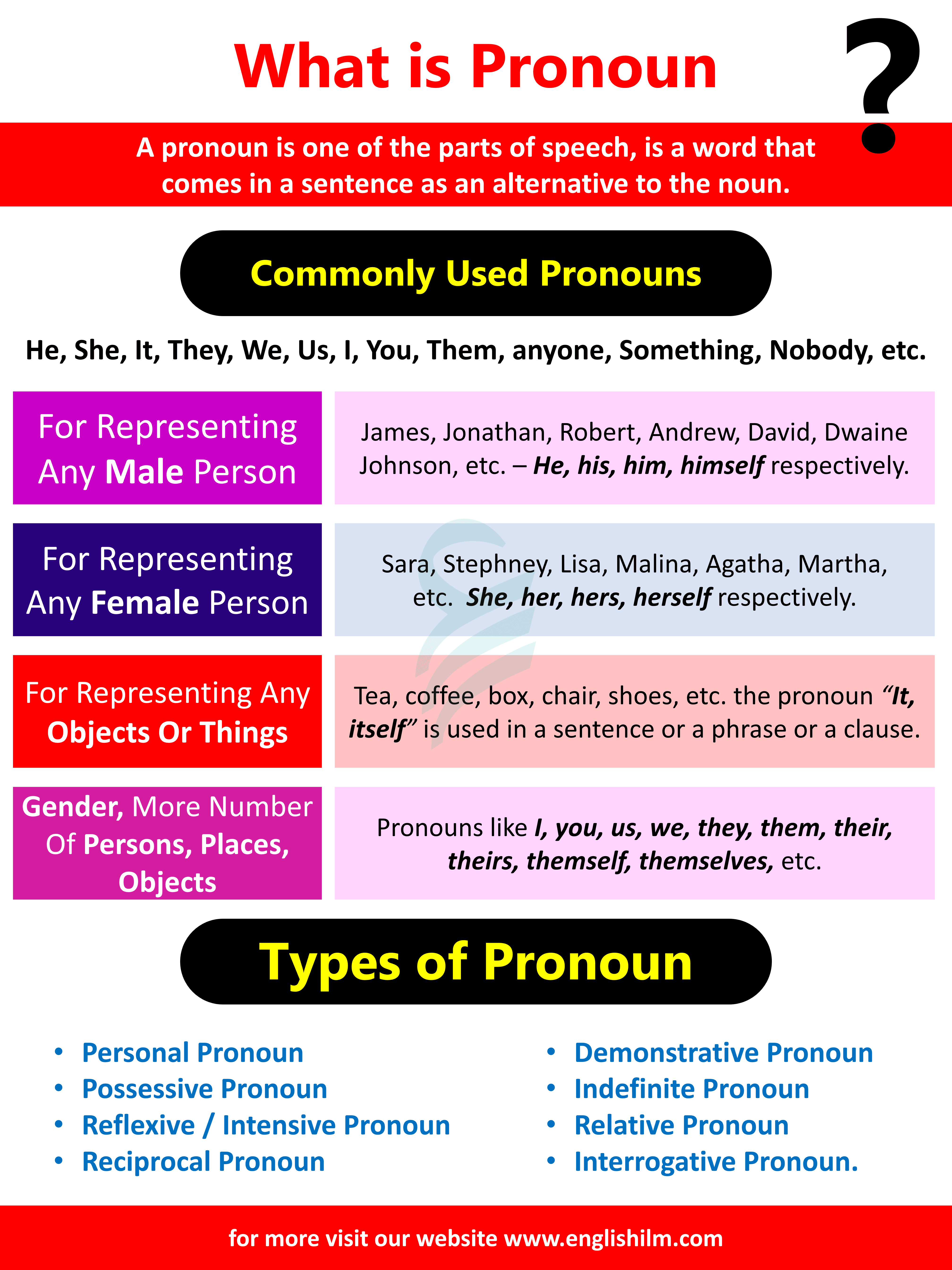
Let’s see a short description of each subtype of the pronoun:
1. Personal Pronoun
Personal pronouns have various forms with respect to numbers (maybe in singular or plural), gender, things, person, animal, or formality.
In any sentence, if the personal pronoun and the subject of the sentence (maybe a person, place, thing, or object) are the same, then the pronoun is also called the subject pronoun too.
- I, we, him, you, she, he, it, they, me, her, us, and them are all personal pronouns.
- For the person: represents a speaker in the sentence. (first-person “I”, second-person “You”, or third-person “He, She, It”).
- For the gender: represents the gender of the speaker in a sentence. (masculine or feminine or any object called neuter).
- For the number: represents the quantity or number of objects, or persons (singular or plural).
Examples:
- He needs to start upgrading himself.
Here, he is a subject pronoun as well as a personal pronoun.
- They decorated the entire function within 2 hours.
- I want you to come and play with us.
- Somebody go and call them to come immediately and report on the ground.
2. Possessive Pronouns
The pronoun that shows some relation, possession quality, or direct relation with someone else is called a possessive pronoun.
- Mine, ours, yours, his, hers, its, theirs, etc. are possessive pronouns.
If it comes to the place of the person with respect to the singular and plural forms,
- Say the first person singular: my, mine.
- For the first person plural: our, ours.
- For the second person: your, yours.
- For third person singular: his, hers, it’s.
- For third person plural: their, theirs, whose.
Examples:
- We had spent a lot of time with Jimmy and his sister.
Here, “His” is possessed for a person named Jimmy in a sentence.
- This is my personal matter. You better stay out of it.
- This sports car is mine.
- Hey dude! What is your problem?
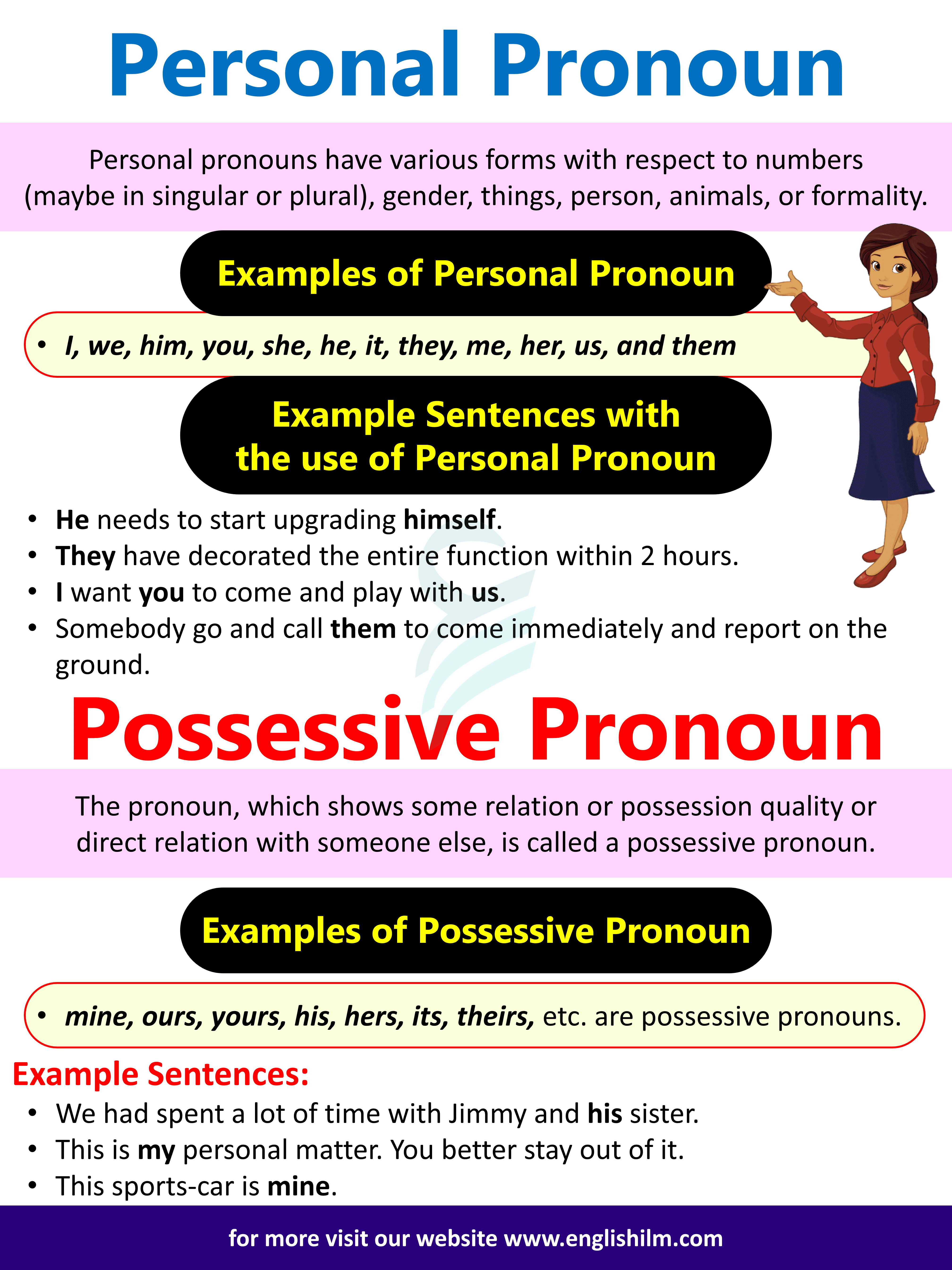
3. Reflexive Pronoun
A reflexive pronoun is a word that is identical to a pronoun or a reflection of a noun, pronoun, adjective, or adverb that reflects back to the subject in a sentence. These pronouns can be ended by the suffix ‘-self’ or ‘-selves.
The intensive pronoun (also called an emphatic pronoun) is the same as that of the reflexive pronoun, but it is used for other nouns or pronouns present in a sentence to indicate that noun or pronoun separately.
Ourselves (self), yourselves (self), themselves (self), myself, herself, himself, and itself, etc., are reflexive pronouns.
- For the first person singular: myself.
- For the first person plural: ourselves.
- For the second person: yourself, yourselves.
- For the third person singular: himself, herself, itself/oneself.
- For the third person plural: themself or themselves.
Examples:
- He slapped himself in front of others.
Here, the reflexive pronoun “himself” introduces the speaker “he.”.
- Do not blame themselves for this huge loss.
- I took myself inside the museum.
- We don’t have to go to the party; we can enjoy ourselves.
4. Reciprocal Pronoun
The reciprocal pronoun is used when there is more than one subject acting in the same way towards each other.
- To one another (when referring to more than two people).
- To each other (when we refer to two people).
Examples:
- Cadets are wishing one another a better future at their farewell.
Here, the number of cadets is not mentioned in the sentence, and the reciprocal pronoun one another is used to represent all.
- Seetha and Geetha were caught talking to each other during the examination.
- The kidnappers are blaming one another after their failure.
- Both are like best friends, always supporting each other.
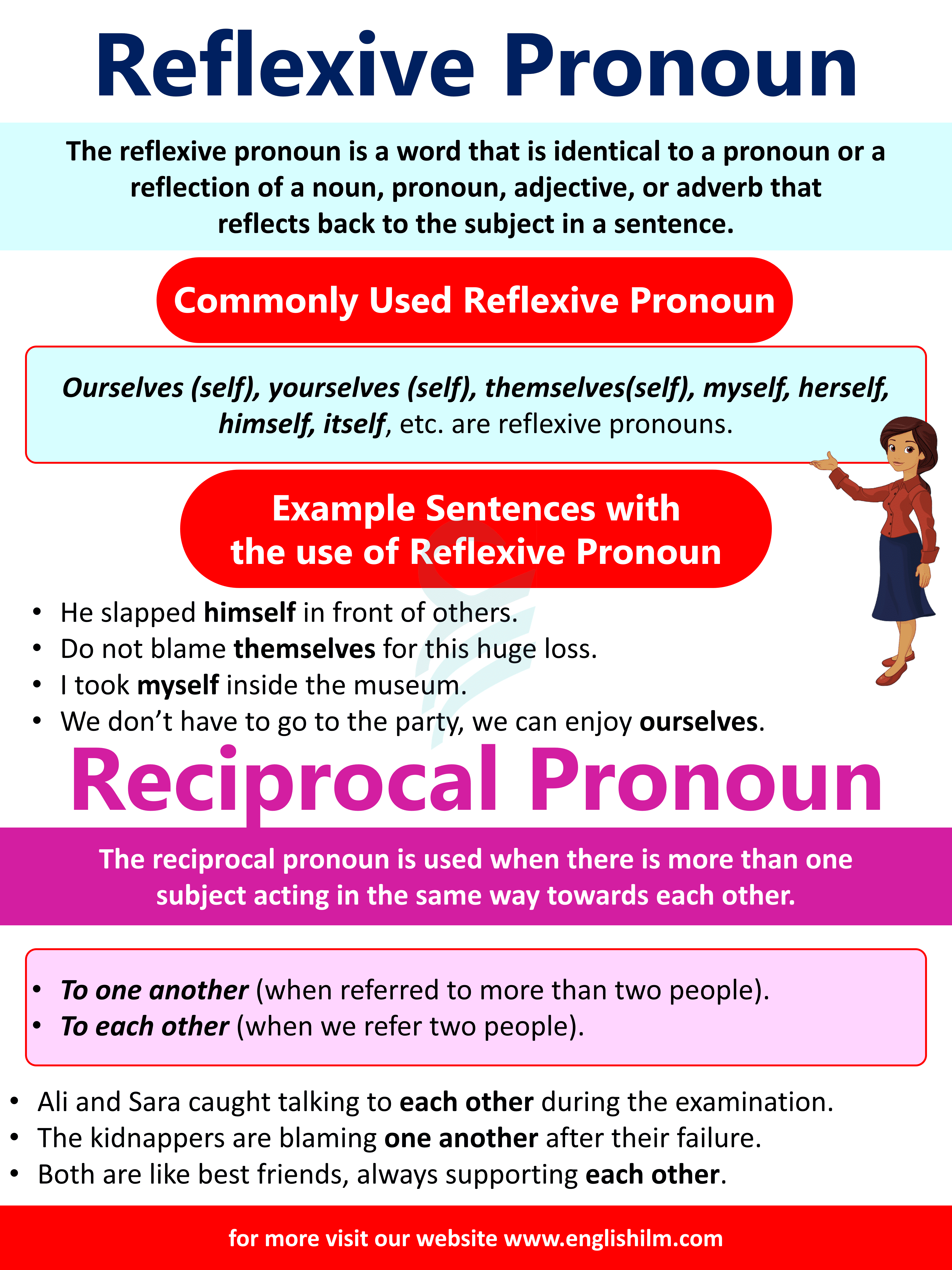
5. Demonstrative Pronoun
The pronoun is used to demonstrate something specific or to improve nouns and pronouns in any sentence. This pronoun can be either singular or plural; it can also be used in place of a noun.
- This, that, these, those, etc., are demonstrative pronouns.
Example:
- You have never imagined this in your life.
Here, this refers to any incident that happened in life.
- That bike looks like a Harley Davidson.
- Can you share those pictures that we clicked last evening?
- Each of these pictures looks so funny.
6. Indefinite Pronoun
Indefinite pronouns are used to mention one or more unidentified objects, places, or persons because they do not specify any precise object, place, or person.
Any, other, either, nobody, some, someone, somebody, something, anyone, everything, all, both, several, much, whoever, whichever, anybody, nothing, none, no one, etc. are indefinite pronouns.
Example:
- All of you belong to the same place.
Here, all is representing a proper noun.
- Somebody is absent from today’s class.
- Nobody comes forward to save that woman who was caught in a road accident.
- Either you answer my question and sit or get out of the classroom.

7. Relative Pronoun
A relative pronoun is a pronoun that is used to express the relation between corresponding persons, places, or things in a phrase or a clause of any sentence.
This pronoun can also operate as a possessive pronoun, which is useful in connecting two sentences.
- Whoever, whom, that, who, which, whose, what, where, when, etc., are relative pronouns.
Example:
- The bird that is sitting on a branch of that tree looks very large.
Here, the relative pronoun “that” relates a bird to a clause of the sentence.
- The athlete who won the gold medal at the Olympics trained hard.
- The chicken grills that she baked yesterday on the barbecue were so delicious.
- The selected players, whoever the committee selects, will report tomorrow morning on the ground.
8. Interrogative Pronoun
An interrogative pronoun is a pronoun that means to interrogate or to ask questions easily. It can also be used as a relative pronoun sometimes or to ask an indirect question.
Most of the time, this pronoun comes at the starting point of the sentence.
- Who, whose, what, which, and whom, etc., are interrogative pronouns.
Example:
- Who is going to tell a story?
Here the answer is the noun of the sentence and is asked by “who.”.
- Whose pen drive was lost yesterday?
- What are you expecting from me?
- Which people come from a powerful place?
- You do not have any idea to whom you are talking?
In certain situations, rarely used interrogative pronouns end with a suffix—ever and soever.
- Whoever, whomsoever, whatever, etc.
For example:
- Don’t harm any hostages; whatever you want, the government will provide it.
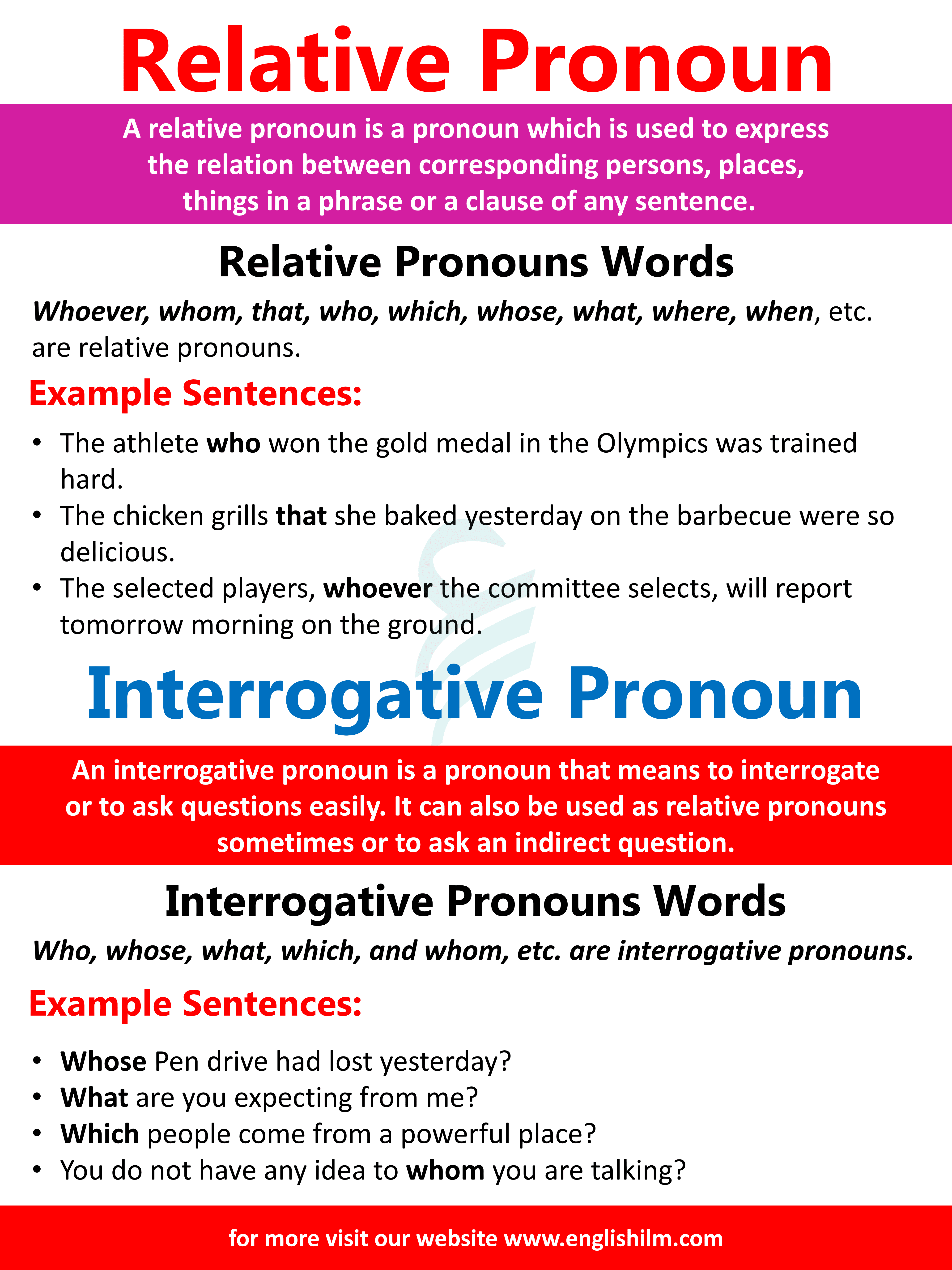
Get a free PDF book of this lesson:
Read More

